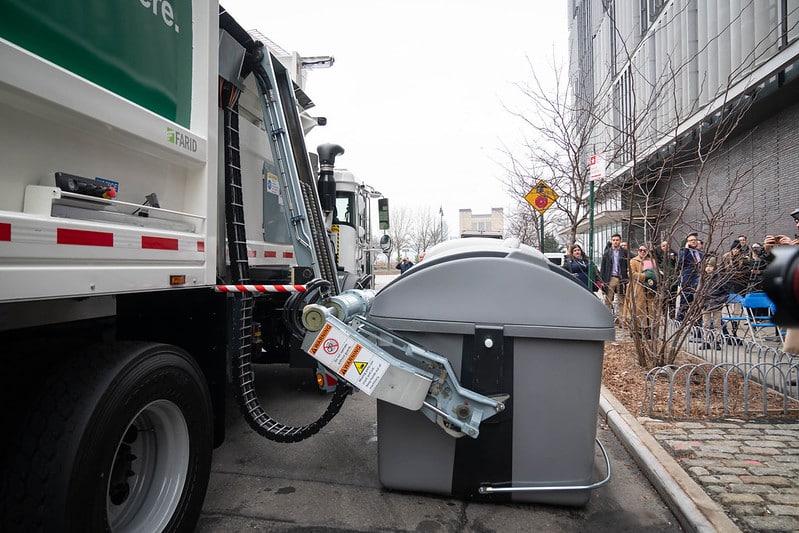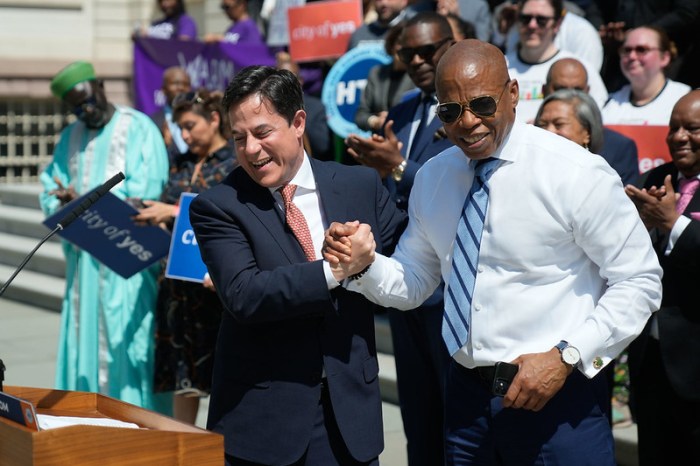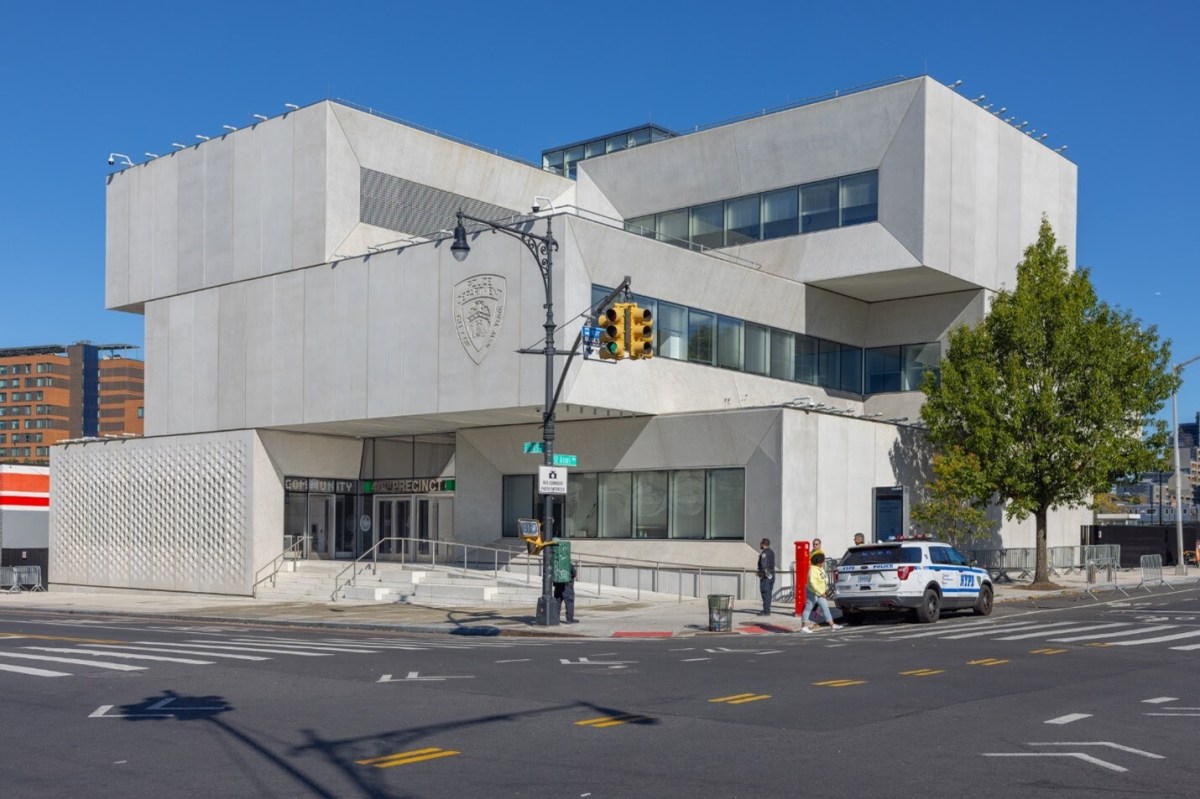Mayor Eric Adams on Thursday unveiled a new “superweapon” aimed at eliminating mountains of black garbage bags that clog city streets — an automated side-loading garbage truck designed to pick up large stationary on-street trash containers.
Hizzoner — who has crusaded against garbage on sidewalks and the rats who feast on it since taking office — also announced a pilot program to containerize all trash in upper Manhattan’s Community District 9. The program is slated to start next spring and builds on a smaller containerization pilot in the district, covering 10 residential blocks and 14 schools, that has been in effect since last August.
Furthermore, the mayor introduced a new “strategy” for determining what size and type of trash bins should be paired with various sized residential buildings.
Adams, at a Manhattan news conference on Thursday, said the side-loading vehicles represent the “future” of garbage collection in the Big Apple.
“Our goal is to take trash bags off our streets, every single bag,” Adams said. “That means no more dodging smelly bags on sidewalks [or] trying to navigate rodents that come out of these bags.”
Many large cities around the world, including in Europe and Asia, already containerize their trash and use mechanized trucks for collection.
Side-loader benefits
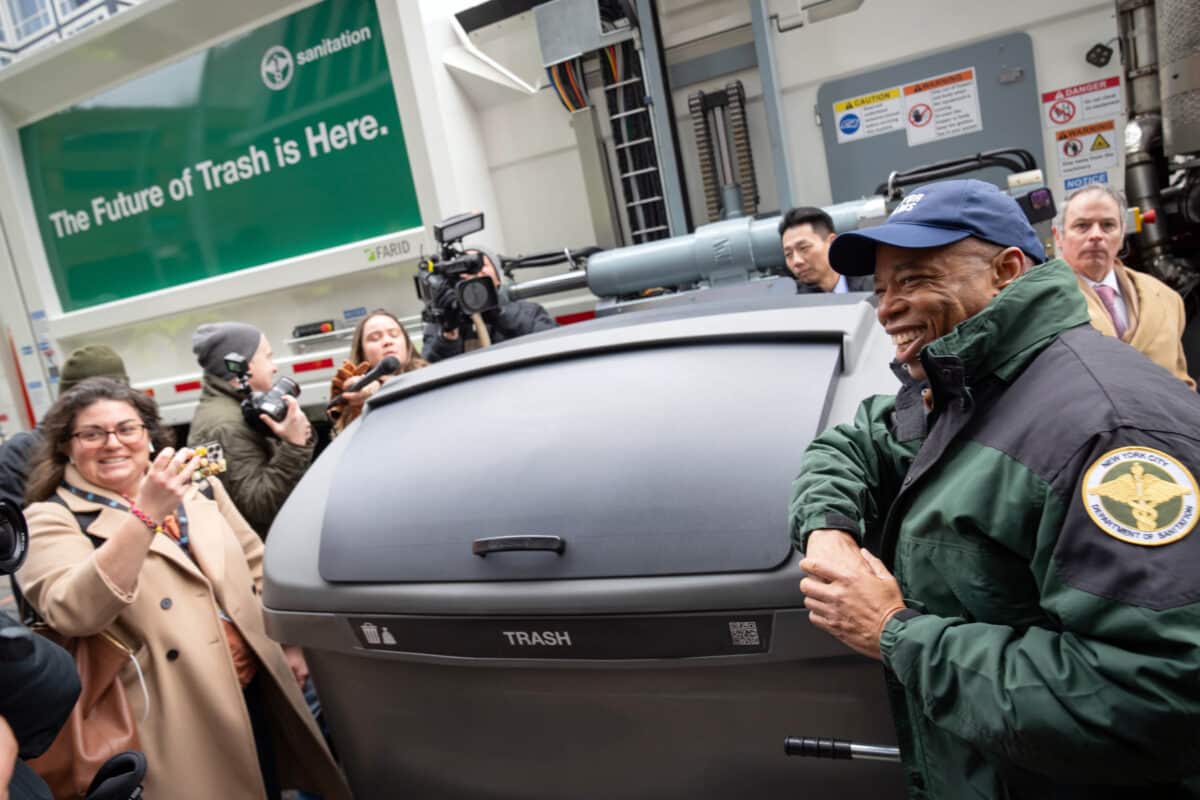
The automated side-loading trucks meet the standards of the US regulatory system and will be able to pick up trash containers across the city’s dense streetscape, said Sanitation Commissioner Jessica Tisch. The agency was able to design the vehicle by utilizing an R&D provision within its current truck contract, she said, which allowed it to create the trucks by combining an American chassis with a European-style body that has the side-loading mechanism.
“We are modernizing an essential service, the collection of our trash, that has not seen this kind of infusion of new technologies since the invention of the compactor truck in the 1930s,” Tisch said. “This new truck will allow for substantially faster collection that would be needed for the manual handling of the same volume of individual bags.”
The automated design will also be safer for sanitation workers, Tisch said, as half of the department’s work-related injuries are strains and sprains that come from lifting and throwing heavy loads of waste into the backs of garbage trucks.
“This truck makes the sanitation workers’ work safer, faster and cleaner, as clean as our streets will be without the piles of trash,” Tisch said.
The commissioner said the mechanized trucks will be key to commencing the expanded containerization pilot in upper Manhattan next year. The city will put out a request for proposals next month, she said, to design the stationary trash containers that will hold waste for large residential buildings and pair with the automated trucks.
Additionally, Tisch said, the city will conduct an environmental review, to assess where bins can best be placed on the streets, and community outreach this year before implementing the pilot in 2025.
The mayor touted the success of the smaller-scale pilot in West Harlem so far, noting rat sightings in the program zone have dropped by 68% compared to the same period a year prior.
City Council Sanitation Committee Chair Shaun Abreu, who represents the pilot area and has been a staunch advocate for containerization, applauded Adams’ move to expand the pilot in his district.
“By expanding our containerization pilot program, we are finally putting West Harlem at the decision table when it comes to their right to live in rodent-free neighborhoods,” Abreu said, in a statement. “We are not only closing the lid on our garbage, we are closing the door on a period of neglect.”
Abreu, who has stood with Adams at several other trash-related events, was reportedly disinvited from Thursday’s press conference after voting to overrider Adams’ veto of the “How Many Stops Act” police transparency legislation earlier this week, according to a story from the New York Daily News.
Containerizing tall building trash
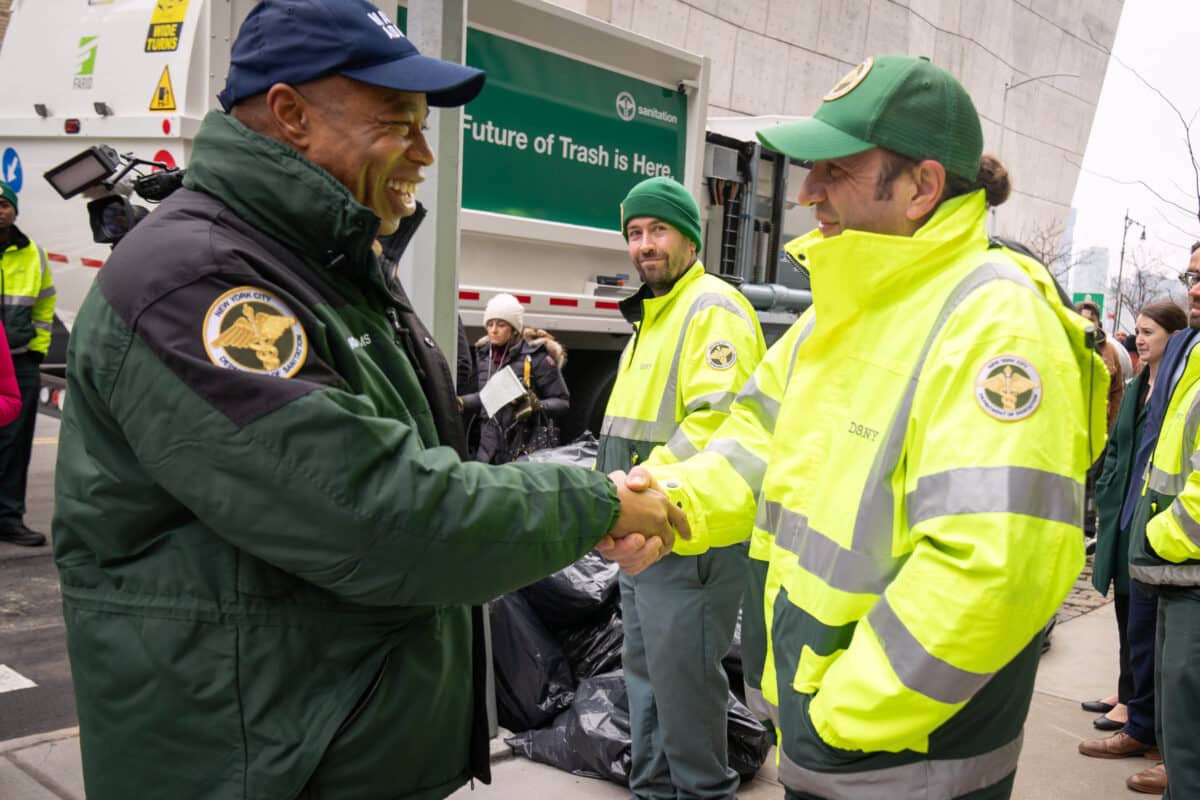
The city also has a new framework for containerizing all residential building trash in the city. Large buildings with 31-or-more units must use the stationary on-street containers, while small buildings of nine units or less will be required to use on-sidewalk wheeled bins and buildings with 10 to 30 units will get to choose between either.
According to the city’s latest estimates, Tisch said, the full citywide rollout of containerization for large residential buildings would eliminate 1% of parking spots across the five boroughs.
“It is definitely something that we are going to study as part of the environmental review and we’ll have more detailed updated information as that moves on,” she said.
Thursday’s action marks the latest phase of the mayor’s bid to rid city streets of unsightly black garbage bags by moving refuse to secure containers.
Adams’ office first started implementing containerization rules last August, when it required all food related businesses — like restaurants, supermarkets and bodegas — to place their refuse in secure bins. Shortly after those rules went into effect, he then announced that all city businesses will have to containerize their trash by March 1, now only a month away.
Additionally, the administration unveiled its containerization plan for residential buildings with nine or fewer units in October. That announcement included a request for proposals to design an official “NYC Bin” with wheels and the Sanitation Department’s intention to retrofit hundreds of trucks with mechanized “tippers” that can load garbage from those containers into the backs of the vehicles.
Read more: Brazen Daylight Shooting in Queens



